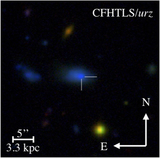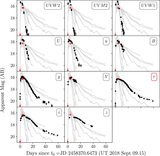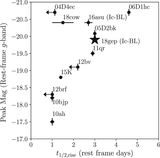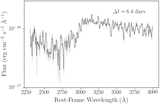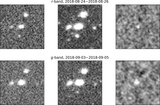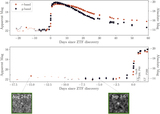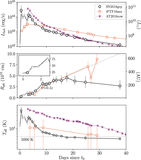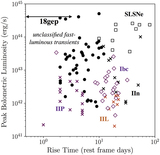Image Details
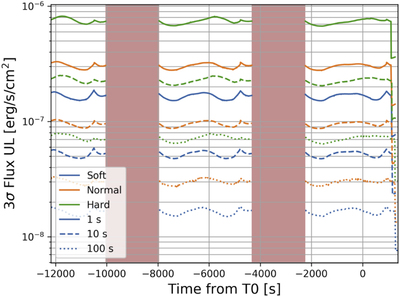
Caption: Figure 8.
3σ upper limits from GBM GRB search, which we performed for three hours prior to t0. The red vertical bars indicate epochs when GBM was not taking data due to passing through the South Atlantic Anomaly. The time of t0 was estimated from a fit to the early data (Figure 7), and is 26 ± 5 minutes prior to the first detection.
Copyright and Terms & Conditions
© 2019. The American Astronomical Society. All rights reserved.


